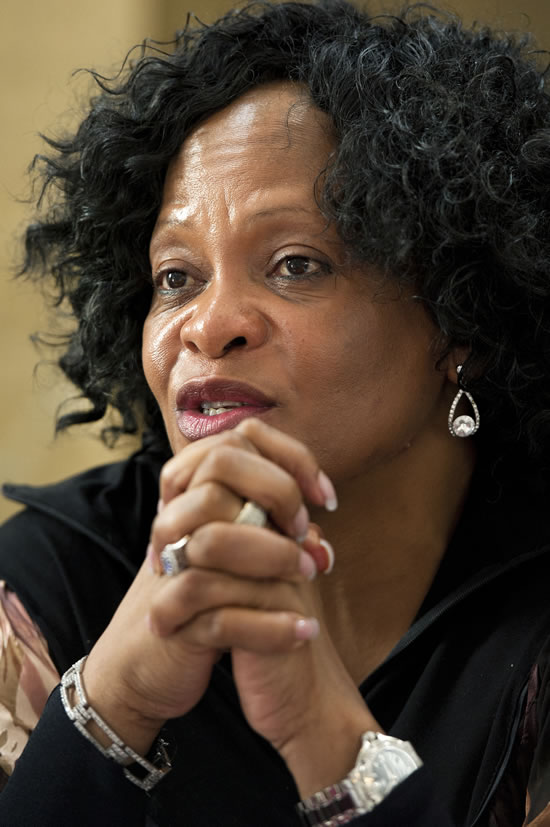Government one step ahead in drought relief
Government one step ahead in drought relief Estelle GreeffGeneral
Government is working hard to ensure that South Africans continue to have access to water even during the current drought that the country is facing.
 The Department of Water and Sanitation is rolling out comprehensive interventions to minimise the impact of drought.
The Department of Water and Sanitation is rolling out comprehensive interventions to minimise the impact of drought.
So far, the department has deployed water tankers to provide water to areas that are hardest hit by the drought.
These areas include KwaZulu-Natal, Free State, and Limpopo, which have been declared disaster areas.
Water and Sanitation Minister Nomvula Mokonyane said her department has committed R352.6 million to the initial drought intervention projects and a further R96.620 million to the provisional tankering and additional interventions.
She added that to address and mitigate the potential impact of the drought immediate, short, medium and long-term measures were being put in place.
The Minister said the measures included strict implementation of drought operating rules at all dams, including restrictions.
“The department will implement water conservation and demand management programmes which includes the War on Leaks and drop the block interventions.”
This also includes emergency interventions by tankering and climate research as well as hydrological and geo-hydrological monitoring.
Buying of water tankers
Minister Mokonyane said the Department of Water and Sanitation, through its National Water Resource Infrastructure Unit, is managing the procurement of 45, 18 000 litre water tankers.
A total of 682 water tanks with stands will be distributed to municipalities in KwaZulu-Natal such as the Ugu District Municipality (DM), Umkhanyakude (DM), Illembe DM and Harry Gwala DM.
“Ilembe DM in KwaZulu-Natal has completed their tank stand installation. Umgeni Water has completed the 30 tanks in Harry Gwala DM in KwaZulu-Natal, along with 81 tanks that have been installed in Umkhanyakude DM. The budget limitation of R2 million allowed for 81 tanks not the 500 they had requested,” said Minister Mokonyane.
“Additional sites are being identified in order to utilise the savings on the budget. Umgeni Water has completed 20 of the 144 Ugu DM tanks. Uthukela DM is beginning the procurement process for the installation of their tanks.”
Borehole interventions
She added that approval was granted to appoint a key service provider to buy siting, drilling and hydrogeological services to implement borehole interventions where the DM did not already have contracts in place.
Work started at the Umkhanyakude and Ilembe DM in September 2015.
“Interim tankering and second phase intervention in five district municipalities, namely Umkhanyakude, Umzinyathi, Ugu, Amajuba, and Uthungulu, have been approved for the total amount of R96 620 552.00.”
The department’s Deputy Director-General for Planning and Transformation, Deborah Mochotlhi, said that the re-use and desalination, eradication of illegal water use, drilling of boreholes in suitable areas and rainwater harvesting were short term interventions.
She added that there are transfers of schemes from the Lesotho Highlands Water Project Phase 2, emergency transfer Tugela to Goedetrouw, Othongathi River transfer to Hazelmere and infrastructure upgrade developments in Hazelmere, Clanwilliam and Tzaneen.
Mochotlhi said was appealing to every individual to use water sparingly and adhere to water restrictions as well as efficient water use practices including not filling swimming pools, or watering their gardens during the day.
Provincial dam levels
Minister Mokonyane said in selected drought areas, such as KwaZulu Natal, the average dam storage of the large schemes is 69 per cent with three of 18 schemes below 50 per cent of full supply capacity.
“An estimated 6 500 stand-alone rural communities are currently experiencing water shortages. These are mostly situated in KwaZulu-Natal, Mpumalanga, Limpopo, and North West provinces. This number could increase to over 11 000 rural communities as the dry period extends and local water resources get depleted.”
She said in drought stricken areas such as the northern parts of KwaZulu-Natal, southern parts of Mpumalanga, and selected areas in Limpopo, North West and Northern Cape, about 50 per cent of local water storage was facing challenges and needed to be managed properly.
The drought currently affects 173 of the 1 628 water supply schemes nationally, serving approximately 2.7 million households or 18 per cent of the national population.
In Gauteng the municipalities are experiencing strains on the supply systems due to high demand and current high temperatures.